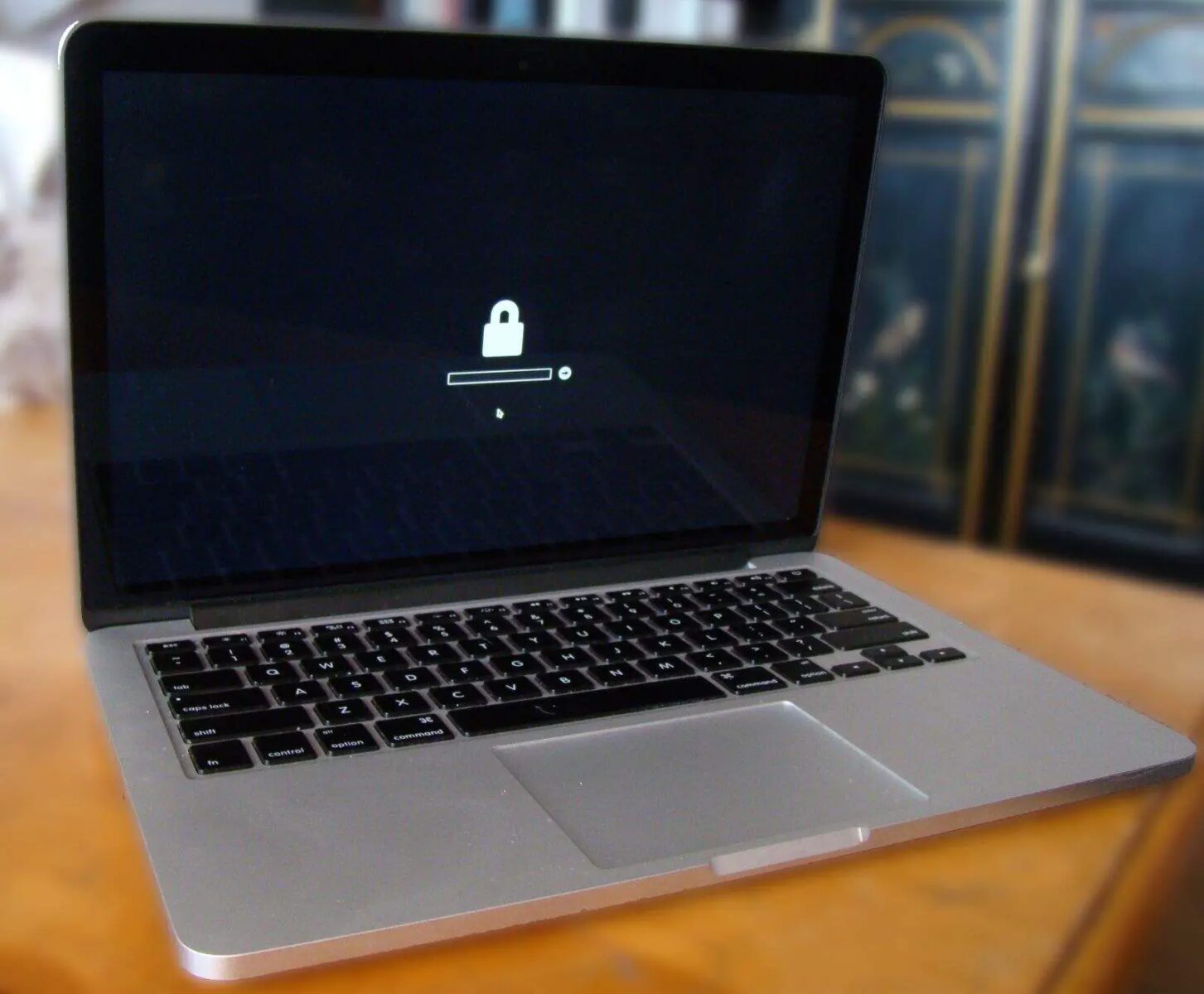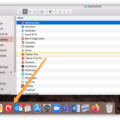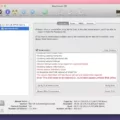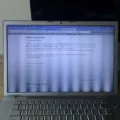Are you dealing with an EFI lock on your Mac? An EFI lock is a security measure that can be applied to your Mac to prevent it from being accessed by unauthorized users. It prevents the system from booting up, as well as any changes to the operating system or hardware. While this feature is incredibly useful, it can also be incredibly frustrating if you forget your password.
In this blog post, we will discuss what an EFI lock is, how to remove it from your Mac, and how to prevent it in the future.
What Is an EFI Lock?
An EFI (Extensible Firmware Interface) lock is a feature of Apple computers that prevents users from making changes to the operating system or hardware without providing a password. This applies even if the computer has been restarted. This means that any changes made to the computer must be done with authorization from someone who knws the password.
The password is created when you set up your Mac and stored in a memory chip called NVRAM (Non-Volatile RAM). When you turn on your Mac, it looks for this NVRAM chip and compares it to what’s stored in its firmware. If they don’t match, then you’re asked for a password beore you can access your Mac.
How Do I Remove an EFI Lock From My Mac?
If you have forgotten your password for an EFI locked Mac, thee are several ways to remove the lock:
1) Using macOS Recovery – You can access macOS Recovery by restarting your Mac while holding down Command + R keys. When the Utilities screen appears go to the Utilities menu bar item and choose “Firmware Password Utility” Select to turn the Firmware Password OFF.
2) Using Apple ID – If you have set up two-factor authentication using an Apple ID, then you can use it to unlock your Mac by entering both your Apple ID and recovery key into macOS Recovery mode.
3) Reinstalling OS X – If all else fails, then you may need to reinstall OS X completely in order to reset any passwords assoiated with it and start over fresh with a new setup process.
4) Contacting Apple Support – If none of thse solutions work for you, then contact Apple Support directly for assistance in unlocking your mac or resetting its firmware password.
How Can I Prevent My Mac From Being EFI Locked?
There are severl steps that can be taken in order to prevent your mac from being locked again:
1) Set up two-factor authentication using an Apple ID – By setting up two-factor authentication with an Apple ID, ayone attempting unauthorized access would need both the login credentials and recovery key associated with that account in order gain access.
2) Use strong passwords – Make sure that any passwords associated with accounts on your mac are strong enough so that they cannot easily be guessed by potential hackers or malicious software programs. It’s also important not to use the same passwords across multiple accounts as this could make them easier for hackers or malicious software programs to guess correctly if they gain access one account they could use tose credentials across multiple other accounts associated with them as well!
3) Keep software updated – Keeping all software on your mac updated regularly will help ensure that any potential security flaws are patched befre they can be exploited by malicious actors attempting unauthorized access into your system!
4) Use a firewall – Setting up a firewall on your mac will help protect agaist any attempts at unauthorized access by blocking incoming connections from untrusted sources outside of local networks!

Bypassing EFI Lock on MacBook Pro
In order to bypass the EFI lock on a MacBook Pro, you’ll need to start up from macOS Recovery. From there, open the Startup Security Utility or Firmware Password Utility. Once it’s open, click the option to “Turn Off Firmware Password.” You will be asked to enter the firmware password aain for confirmation; once you’ve done this, quit the utility and restart your computer. This should allow you to bypass the EFI lock on your MacBook Pro.
Does My Mac Have an EFI Lock?
To check if your Mac has an EFI lock, you can restart your Mac while holding down the Command + R keys to enter Recovery Mode. Once in Recovery Mode, open the Utilities menu and select “Firmware Password Utility”. If you see a prompt to enter a password, then your Mac has an EFI lock enabled. You can also check for an EFI lock by looking in System Information (found under the Apple menu > About This Mac). In System Information, look for “Firmware Password” under the Hardware section. If it says “Enabled”, then you have an EFI lock on your Mac.
Unlocking a Firmware Lock on a Mac
To unlock a firmware lock on a Mac, you need to boot into Recovery Mode by pressing and holding Command+R when starting up the computer. Once in Recovery Mode, go to the Utilities menu bar item and select “Firmware Password Utility”. From there, you can choose to turn off the Firmware Password. After this is done, your Mac will be unlocked and ready for use.
Finding the EFI Firmware on a Mac
To find out your EFI firmware version for your Mac, open the Apple menu and select About This Mac. Then, select System Report and choose Hardware from the Overview section. Here, you’ll be able to view your Model Identifier, Boot ROM version, and SMC version number. These numbers will tell you what EFI firmware version is running on your Mac.
Removing MDM Lock From Macbook Pro
To remove a Mobile Device Management (MDM) lock from your Macbook Pro, you need to first delete the MDM enrollment profile. To do this, open the System Preferences on your Macbook Pro, then go to Profiles. Select the MDM Management enrollment profile and click the minus icon at the bottom of the dialog to begin the removal process. If prompted to confirm, click Remove. Once you have deleted the profile, you shold be able to access your Macbook Pro without any further locks or restrictions.
Understanding Mac Firmware Locks
A Mac firmware lock is a security feature that requires a password to be entered bfore the computer can boot up. It prevents unauthorized access to the computer, including booting from any internal or external storage device other than the designated startup disk. It also prevents users from using most startup key combinations. To unlock the firmware, you must enter the correct password when prompted during startup.
Unlocking a Locked Mac
Yes, a locked Mac can be unlocked. Depending on what type of lock you have enabled, tere are several options available to you. If you have enabled a passcode lock, then you can unlock your Mac by entering the passcode or using your Apple ID to reset your password. If you have enabled a FileVault encryption, then you will need to provide the recovery key in order to unlock your Mac. Additionally, if you have set up Find My Mac, then you can use iCloud and another device to remotely unlock your Mac.
Turning Off EFI Mode
To turn off EFI mode, you will need to access the System Utilities screen in your computer’s BIOS setup. From there, select System Configuration > BIOS/Platform Configuration (RBSU) > Boot Options > Advanced UEFI Boot Maintenance > Delete Boot Option and press Enter. Select all of the boot options from the list, then save and exit the BIOS setup. This will disable EFI mode on your computer, allowing it to boot using legacy BIOS instead.
Should I Use EFI?
Whether you should enable EFI or not depends on the device you are using and the operating system you are running. If your computer is a newer model, it likly has an EFI-compatible BIOS installed and will support EFI. In this case, enabling EFI may provide some benefits such as faster boot times and improved security features like Secure Boot.
However, if your computer is an older model and does not have an EFI-compatible BIOS, then enabling EFI may cause compatibility issues with certain software or drivers. In that case, it might be best to leave it disabled or install the necessary firmware updates to make sure everything is compatible.
Overall, in most cases it’s recommended that you enable EFI if your system supports it. It can provide noticeable performance gains as well as increased security measures to help protect your device from malicious software.
Conclusion
Overall, EFI lock mac is a security feature that helps protect the data stored on Mac computers from unauthorized access. It prevents the computer from booting up without entering a password or some other form of authentication. While this feature does help to provide additional security for Mac users, it can also be frustrating when users forget their passwords and are unable to access their data. Fortunately, if you have forgotten your EFI lock password, there is a way to turn off the firmware password and restore access to your Mac computer. It is important to remember that while this feature provdes additional security it can also be bypassed by someone with enough knowledge or technical expertise, so it is important to keep all of your data secure with a strong password.








